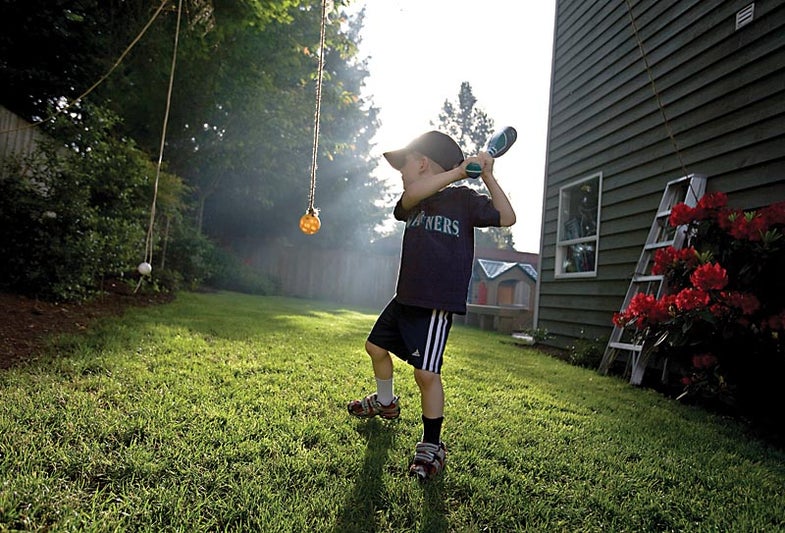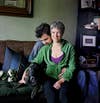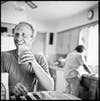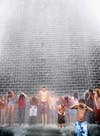How To: Photograph Your Friends and Family
We talked to eight top photojournalist for advice on how they capture great images of friends and family.

As photographers, we know that the best people pictures convey personality, character, mood, design, and a sense of place, all with a minimum of “say cheese” artificiality. To help you make such pictures of friends and relatives, we asked eight photojournalists who professionally shoot people in family and social situations how they do it.
Candids vs. Posed
Everyone we interviewed agreed: The best family photos are candid and unposed. Posed portraits can be stiff, strained, and artificial, lacking in spontaneity and life. Unposed candids, on the other hand, can move your viewers with colorful action, facial expressions that reveal mood and personality, and interaction suggesting relationships, subtexts, even hints of a narrative angle or story line.
Joshua Drake, a photojournalist living in Charleston, SC, sums it up: “The pleasure in candid photography is capturing those fleeting, honest moments that happen in everyday life. Candid photography is about observing and anticipating, not stopping and posing.”
The downside to candids? You have to shoot a lot more frames to find a keeper compared with posed portraits. But what’s wrong with that? Usually, the more you shoot, the more relaxed and natural friends and family will become, and the more likely you will capture expressive moments.
Where and when to photograph candids? “Parties and social events,” suggests pro photographer Jonathan Hanson of Baltimore, MD. “Your friends are engaged and distracted, making it easier for you to work unnoticed. People expect photographers at weddings, concerts, and parties, so they’re more relaxed in the presence of cameras. The more activity there is, the easier it is to blend in.”
And blending in is important. “Settling into a situation can be the best thing for candids,” says Carmel Zucker, a Boulder, CO, freelancer whose work has appeared in Marie Claire, Country Living, and the New York Times. “I never shoot and run,” she says. “I wait until people relax around me, then shoot only when the moment is right.”
Adds Brent Clark, an award-winning photojournalist from Carrboro, NC, “Your own home is a great place for candids. Since family and friends are already at ease around you, it’s much easier to capture intimate moments.”
Home is probably where you’re most relaxed. And when you’re comfortable, your subjects will be, too. You’ve scoped out the best lighting and backgrounds in and around your home, right?
Choose Your Gear
The right equipment can make a difference. Almost any DSLR can be used for people pictures, but the best will excel in low light, and those with live view—especially with a tilting screen—will help with high or low camera angles.
The right lens is even more important. “I like fast primes for candid photography because of the depth-of-field possibilities they offer,” says Joshua Drake. “I shoot wide open—or close to it—so the people in my photos are sharp, while fore- and background elements are defocused to subtly suggest mood or color.”
Prime lenses, because they’re usually smaller than high-speed zooms, are less intimidating (especially to young kids). They also allow you to shoot discreetly. Primes are usually fast, too, which can often rule out the need for a flash and tripod. You may think you can’t afford fast glass, but a 50mm f/1.8 lens can be as effective as it is inexpensive.
As for focal lengths, think wide. “My favorite lens for people candids is 35mm or wider,” says Jonathan Hanson. “For my subjects to dominate the frame, I have to get physically close with a wide-angle lens, and this communicates as intimacy, which I like.” Wide-angles also let you layer fore-, middle-, and background elements in interesting ways, and, with ultrawides, you don’t have to obsess about framing and composition, but can shoot from the hip and crop later. If you’re lucky, people won’t know you’re shooting.
Shooting Strategies
Composing? “I like to show the space around my subjects,” says Dan Chung, who shoots for Washingtonian magazine and operates a photo gallery in the metro DC area. “It reveals something of their character and what they value.”
Don’t lose your uncle or aunt in visual clutter, though. To prevent that, Chung is constantly in motion. “I compose with my feet and my back—tiptoeing, stooping, bending, and reaching,” he says. “I ask what’s important in a scene and what’s not, and then start walking, bobbing, and weaving to showcase my subject, and hide everything that distracts from it.”
As shooting starts, Chung likes to gain his subjects’ confidence. “I show them a good shot on the camera’s LCD,” he explains. “People are self-conscious when being photographed. If you can prove that you can take a flattering picture, they’ll loosen up.”
As for lighting, most pros prefer available over flash. Flash not only introduces a potentially unnatural color temperature, but it can flatten a scene, while reminding everyone within eyeshot that you’re taking pictures.
“I really love the variety of colors and moods that available light can offer,” says Joshua Drake. “Late afternoon sun, incandescent lights in a home, or fluorescents in a bar, all translate beautifully in photographs.”
Such expressive lighting can really set the mood for great pictures of the people that mean the most to you.









